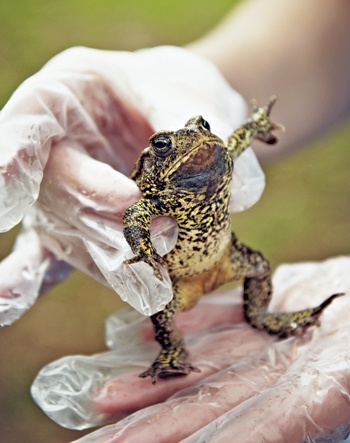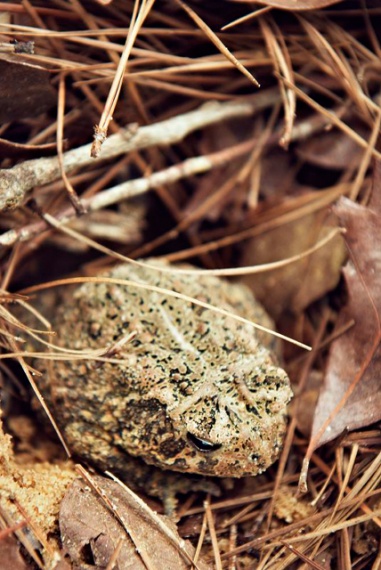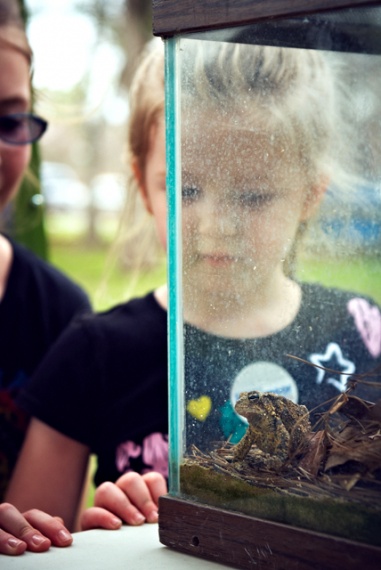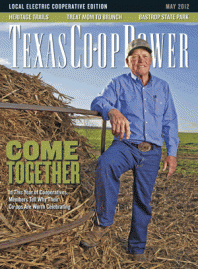Shock and sadness … those were my predominant feelings as I made my first visit to Bastrop State Park since September’s devastating Bastrop County Complex wildfire ripped through the 6,500-acre loblolly pine forest preserve.
Virtually everywhere I looked on a cloud-scattered December afternoon, I saw the path of the firestorm that had engulfed the park: scabs of charred bark clung to tree trunks; bare earth, in some spots covered by a thin layer of dead pine needles; vast swaths of empty floor of the forest known as the Lost Pines, where underbrush once stood thick. Everywhere my eyes landed, I found evidence of loss and destruction.
But there were also hopeful signs. The park’s signature cabins built decades earlier by the Civilian Conservation Corps were untouched. Its 18-hole golf course, unique among Texas state parks, was relatively unblemished. Thanks to the efforts of firefighters, the swimming pool area and historic CCC-constructed Refectory had been spared from the flames.
The foundation for the park’s return to its pine-scented glory was intact. But much recovery lies ahead.
A torrential downpour in late January revealed another problem facing the park: erosion. Plants that had held the soil in place were now ash. The 5 inches of rain that fell during the one-night deluge washed out a portion of Park Road 1A, part of a winding network of roads that connects Bastrop State Park to its sister, Buescher State Park.
Beset by these problems, and a subsequent loss of visitors and revenue, park staff members are fighting back. Restoration of campgrounds, roads and trails is ongoing. Almost all campgrounds are again open. Many trails are accessible, and dead trees that pose a danger to visitors are being marked and cut.
And nature is showing her resilience—saplings have sprouted through the soil enriched with ash from their burned ancestors. Birdsong echoes through the bare trunks, and even the calls of the endangered Houston Toad, which some biologists feared had been wiped out by drought and conflagration, have been heard.
I, like many who have visited the park through the years, wondered what I could do to help. A volunteer workday provided the answer for me.
Led by Volunteer Coordinator/Park Interpreter Katie Raney, the volunteer days have set hundreds of hands to work on projects where people power can make a difference.
That’s how on a sunny February morning, I found myself with about 50 other hard hat-clad volunteers traipsing toward Pond No. 8, a Houston Toad hangout near the route of the Lost Pines Trail. Our mission: spread mulch made from fallen trees around the perimeter of the pond to give the toads a place to hide and help promote regrowth of underbrush that will provide the amphibians with habitat.
We formed a bucket brigade stretching from the large mulch pile atop a rise down several hundred feet to the pond’s edge. The shivering of a cool winter morning was quickly forgotten as a steady stream of filled, five-gallon buckets were passed hand-to-hand downslope with mulch to be spread on the ground and stacks of empties handed back up to be refilled. Jackets were doffed as we made quick progress, with friends and strangers, young and old and in singles, couples and groups tackling the work at hand with smiles, jokes and laughter.
A little more than two hours later, the last bucket was passed down and dumped, and the toad oasis of Pond No. 8 was ringed with a layer of protective mulch.
I returned to my truck with weary arms and a tight back but was left with the satisfying feeling that perhaps I’d made a difference. Maybe because of the efforts of myself and the other volunteers, a toad on the brink of extinction would have a fighting chance to survive and a park I love to visit will someday fully recover.
——————–
Kevin Hargis, food editor




